Due to their smaller size, smaller chicken breeds are often perfect for hobbyists and backyards. They are generally egg-laying breeds since a small chicken will not produce much meat no matter what you do. They usually require less food due to their smaller stature, though they may be a bit more sensitive to outdoor elements as well.
To put it short, there are many reasons to raise small chickens. In this article, we’ll take a look at some of the most popular small chicken breeds.

The 12 Best Small Chicken Breeds
1. Silkie Chicken

The Silkie only weighs about 2 to 3 pounds, but they can lay up to 120 eggs per year. They are not considered meat chickens, though they are sometimes considered a delicacy in Asia. They are probably one of the most popular smaller chicken breeds because of their laidback nature. They are incredibly docile and fluffy to boot.
The United States is the only place you’ll find the smaller version of this chicken, though the full-sized counterpart is found in other countries. They begin laying eggs around 20 weeks of age and are great mothers. They will easily sit on eggs that aren’t there, thanks to their predisposition to go broody. For this reason, they work great when paired with less motherly breeds as well.
They look like little puffballs, which indeed is part of the reason they are so popular. They also come in many different colors so that they can add quite a bit of interest to your backyard. They have entirely black skin and bones, leading to some interesting conversation if they are ever slaughtered for meat.
2. Sablepoot Chicken
This type of Bantam chicken is one of the oldest in the world. However, it is also one of the hardest to find today, making it a bit expensive.
These birds weigh less than 2 pounds and usually lay 150–180 tiny eggs a year. Their eggs genuinely are smaller than most, so that is something to keep in mind if you’re looking to purchase one.
This bird has a six-inch-long feather covering its feet, partially why it is named the “Sablepoot” in many parts of the world. It is also called the “Booted Bantam,” though this name is only prevalent in the states.
These chickens are perfect mothers and will raise their babies without any issues.
They can be susceptible to diseases and the weather. They aren’t incredibly hardy birds, and we only generally recommend them for experienced people. They aren’t a great first chicken, as they require active and particular care.
These chickens are most useful as pets or exhibition chickens. They aren’t large enough to produce meat and only lay tiny eggs, so they aren’t the best for eating.
3. Sebright Chickens

The Sebright is a beautiful chicken. This chicken usually weighs less than 2 pounds and lays about 160 eggs a year. They are not used for meat due to their smaller size, like most chickens on this list.
This is a newer breed of chicken that wasn’t bred until the 1800s. Sir John Saunders Sebright developed the breed, hence the chicken’s name. This breed was designed to be an ornamental chicken breed, which means they look beautiful and require little maintenance.
They are friendly but also very talkative. Don’t get them if you’re looking for silence in the morning. Many people consider their chattiness an added feature, however.
They start laying around 16 weeks and are only so-so mothers. They are a famous bird for small children due to their docile nature.
4. Belgian d’Anvers Chickens
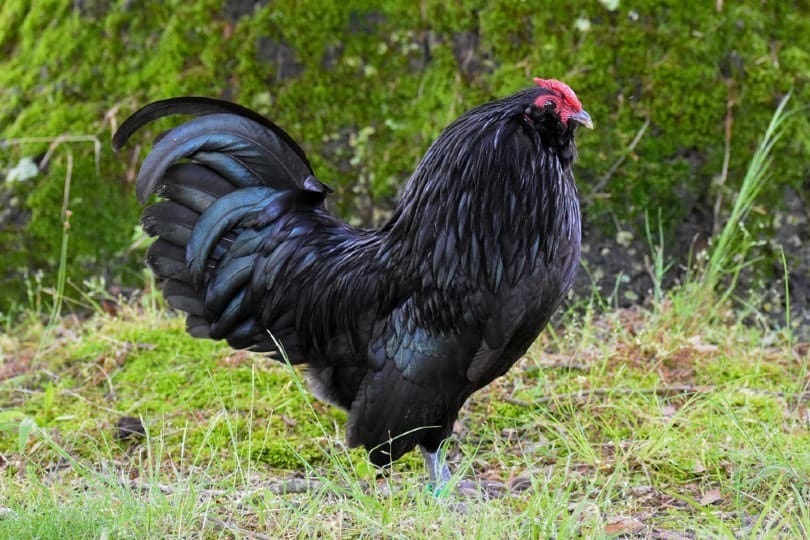
This is another relatively small breed that weighs less than 2 pounds. They lay up to 160 eggs a year, though fewer are also common. Despite this, they are usually raised as solely ornamental birds, as their eggs are relatively tiny and not easy to eat.
They are quite dominant when it comes to other chickens, especially the roosters. They love people but can occasionally be aggressive. They aren’t the friendliest bird on this list. They are inquisitive birds and will get into things.
They are very low-maintenance and are sometimes raised for eggs. They are quite noisy as well, mostly when they are worked up. For this reason, you may want to avoid them if silence is vital to you.
5. Cochin Bantam Chickens
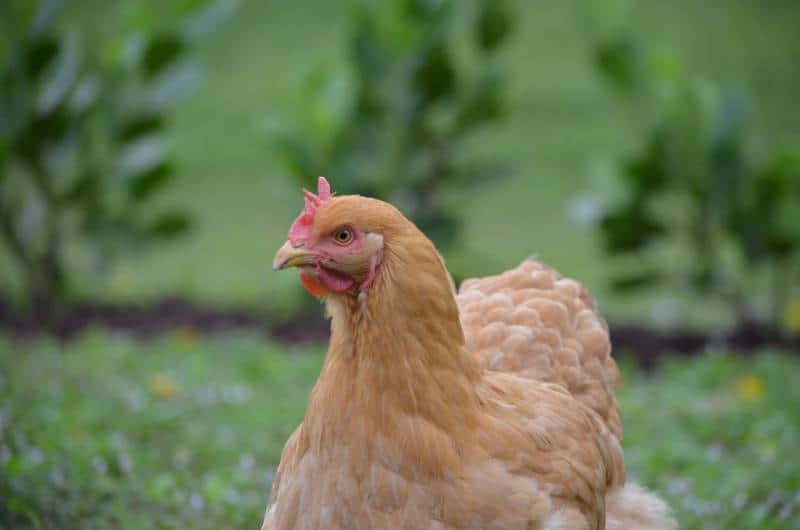
These chickens originated from China. They weigh less than 2 pounds and lay up to 160 eggs per year. They also make decent meat chickens despite their smaller size. They are great mothers, which is perfect for those who want to hatch their eggs.
These birds are relatively pretty and come in all sorts of colors. They add some character to the yard and make excellent chickens for backyard hobbyists.
There is a larger version of this breed that gets to about nine pounds. However, the smaller version usually stays below 2 pounds, making them smaller chickens in all regards.
Usually, you can expect these birds to lay three to four eggs a week.
6. Belgian Bearded d’Uccle
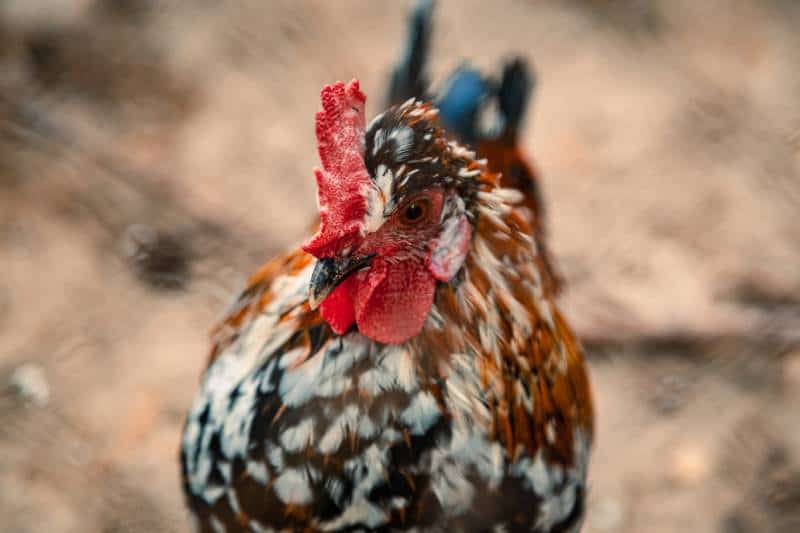
These are lovely chickens that add some serious interest to the backyard. They weigh less than 2 pounds and lay up to 100 eggs per year. They do not make good meat chickens, as their meat is usually low quality. They are great foragers, which means you’ll have to pay even less for food. Their eggs will also be protein-rich since they will eat more bugs than other breeds.
These chickens come in a lot of different and patterns. The American Poultry Association recognizes only seven, but they can come in many more in reality.
While they don’t lay that many eggs, they do lay year-round and get broody quite quickly. If you don’t need that many eggs, this is a suitable breed for you.
7. Sultan Bantam Chicken
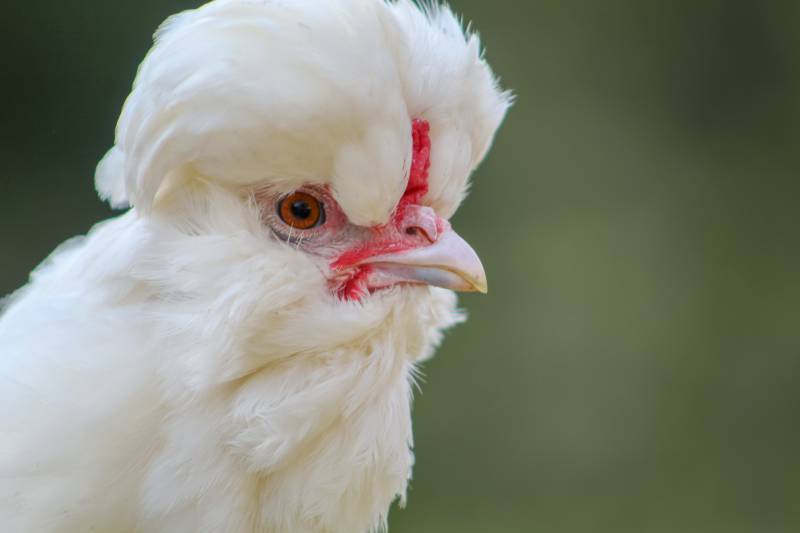
With a very interesting plumage, these birds are usually considered to be ornamental. They get to about 1.5 pounds maximum but only lay about 60 eggs per year. They don’t produce good meat either. Instead, they are mostly considered pets and show birds.
This breed is ancient and dates back to the Ottoman empire. They have a unique style of feathering that makes them quickly recognizable. They are usually white and quite poofy. They also have five toes instead of four!
They are relatively calm and easily relaxed. This makes them great pets and show birds. However, they aren’t particularly good layers or meat birds.
8. Japanese Bantam Chickens
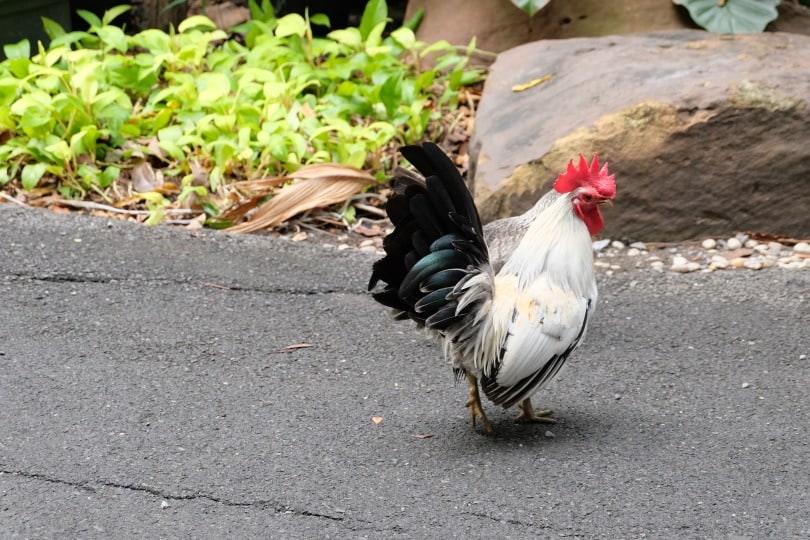
As the name suggests, this breed comes from Japan. They weigh less than 2 pounds and lay very few eggs. They also have a shy temperament, which makes them a little more work to keep as pets. They are easily spooked, which means they will likely hide from children and anything they consider scary.
They have extremely short legs, which makes them extremely short. They have no feathers on their legs, but they do have a fanning tail.
They come in many different colors. The eggs they lay are also quite colorful. Usually, they are at least a cream color, but they can be tinted with all sorts of colors. They make excellent mothers but usually lay less than an egg a week.
They are only particularly suitable as pet chickens for this reason.
9. Dutch Bantam
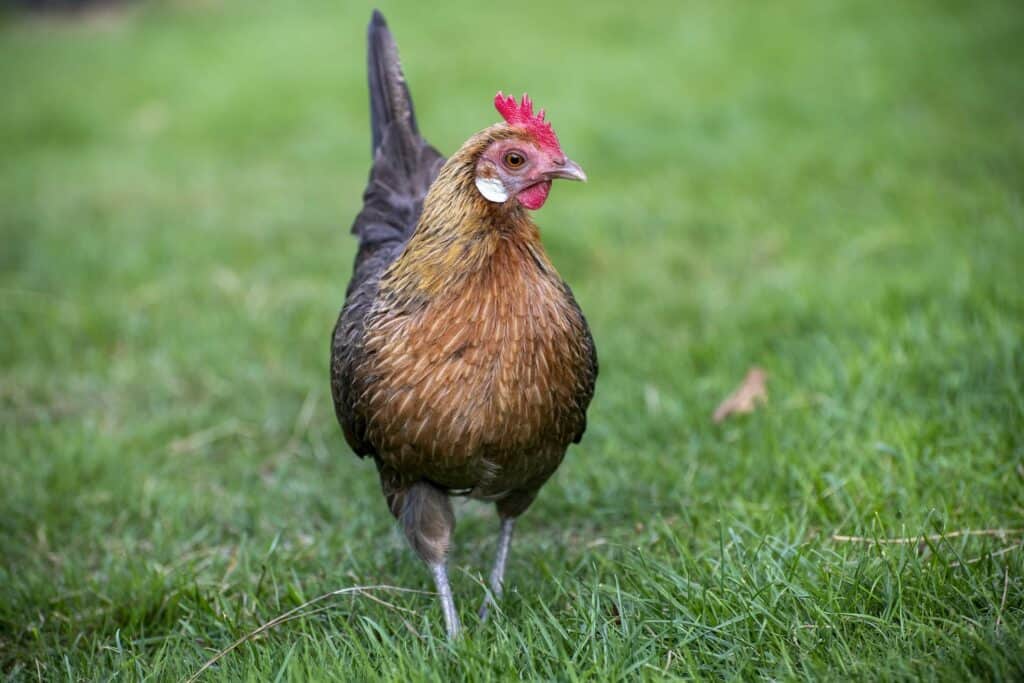
Dutch Bantams weigh less than 20 ounces, making them one of the smaller birds on this list. They do lay 100 eggs per year. This isn’t a significant number, but it is more than some.
Known as nervous chickens, these birds tend to be easily scared. However, they are easy to tame and can be friendly with the right handling. You have to be reasonably careful when interacting with them, so they may not be the best chickens for children.
These chickens are excellent mothers, but they can also be a bit protective. If you’re looking to hatch your chickens, this is absolutely an option.
10. Buff Brahma Bantams

These chickens are the mini version of the Brahma breed, which is pretty popular. They weigh less than 3 pounds but only produce minimal eggs. They aren’t considered meat chickens or laying chickens. Instead, they’re mostly for exhibition and those looking for pets.
They are incredibly hardy and do well in a variety of climates. They are pretty easy to take care of, which makes them great family pets.
However, if you’re looking for a productive chicken, this breed isn’t for you.
11. Rosecomb Bantams
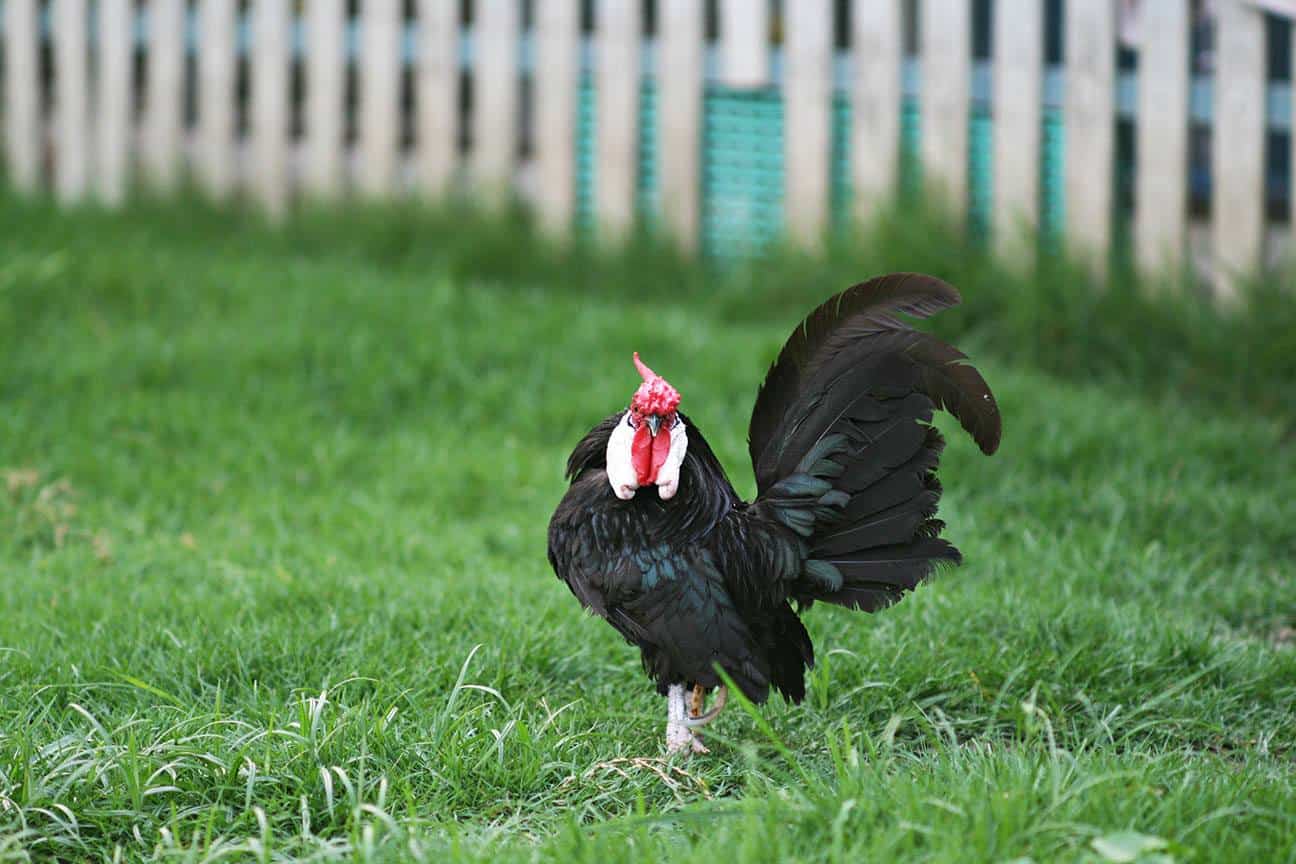
Like many of the birds on this list, the Rosecomb Bantam weighs less than 2 pounds. They only lay about 50 eggs per year as well. They are great foragers and pretty self-sufficient. They don’t need much care and tend to be quite friendly.
They can be a bit aggressive and may be easily spooked if they weren’t raised with the proper handling. They are not ideal for first-time chicken owners for this reason. They require a bit of work.
12. Serama Bantams

These chickens are some of the smallest around, only weighing about 19 ounces. They produce up to 160 eggs a year, which makes them decent layers as well. They have low-quality meat, though, mainly because of their small size.
These chickens are native to Malaysia, where they are still popular. They usually only come in white, though other colors are possible. The chickens are calm and friendly. They are not particularly loud in the least and tend to be relatively easy to handle. They are relatively docile.
The eggs produced are not huge, but there are a fair number of them.

The Benefits of a Smaller Chicken
No matter what breed you’re picking, there are some benefits to owning a smaller chicken. If you’re unsure about a smaller chicken size, here are some things to keep in mind:
Smaller Coop
All smaller chickens will need a smaller coop due to their smaller size. You’ll have to dedicate less space to them in general since they won’t take up as much space as their bigger cousins.
Furthermore, these chickens also produce less waste, so you’ll need to provide less living space – since it won’t get dirty as fast.
If you have limited space to work with, a smaller chicken may be a must. You can keep more in a smaller area.
Easier to Handle
Smaller chickens are usually easier to handle. Firstly, they’re smaller, which means that they’re easier to pick up if necessary. They don’t weigh as much or have as much strength, so they can’t fight you nearly as much as some other breeds.
Secondly, most smaller chickens are friendlier and more docile than bigger chickens. This isn’t always true, of course. There are plenty of bigger chickens that are relatively easy to take care of. However, in general, smaller chickens are going to be more docile.
Less Expensive to Raise
Because they are smaller, these chickens require smaller amounts of everything. On top of a smaller living space, which we already discussed, these chickens also need less food. For this reason, they’ll be cheaper to raise for about the same productivity.
This is likely why so many looking for backyard chickens choose a smaller breed. You can have more for less.
Featured Image: slowmotiongli, Shutterstock
